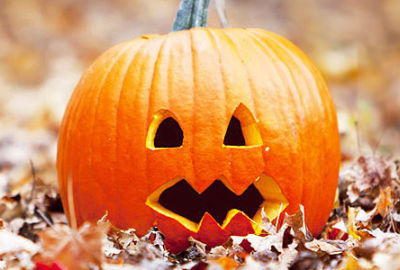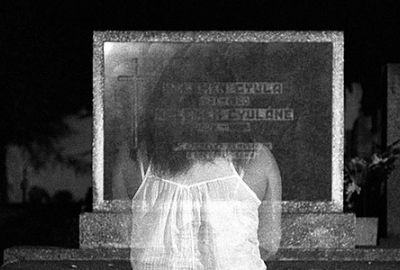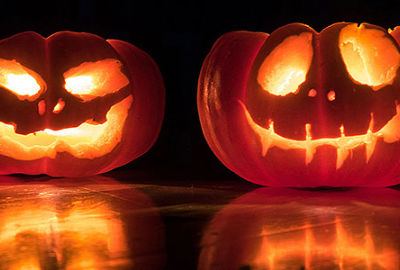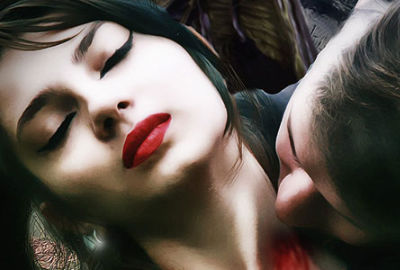Each year on October 31st people from all over celebrate Halloween. A favorite of children and those who like to tap into their “inner child”, Halloween is a day to dress up in costume, hand out candy (usually to children), and try to frighten each other and ourselves with spooky stories. Like many holidays that are celebrated today, Halloween did not start off being celebrated in this manner – its origins have a history that started many centuries ago.
Over 2000 years ago, the ancient Celts, who lived in the area that is now Ireland, Great Britain, and Northern France, celebrated November 1st as their New Year. Since this time of the year was the beginning of winter and colder, darker days, it was more closely associated with death than any other time of the year. The Celts believed that it was at this time that the souls of the dead traveled into the other world. They also believed that during this time the dead were more likely to move among the living. To help the dead along their journey and keep the living from being affected by those of the dead who were evil, the Celts held a festival called Samhain. During this festival they would sacrifice animals, vegetables, and fruits to the dead, and light bonfires in honor of them. Also during the festival of Samhain, the Celts wore costumes of animal skins and heads, and attempted to tell each other’s fortunes.
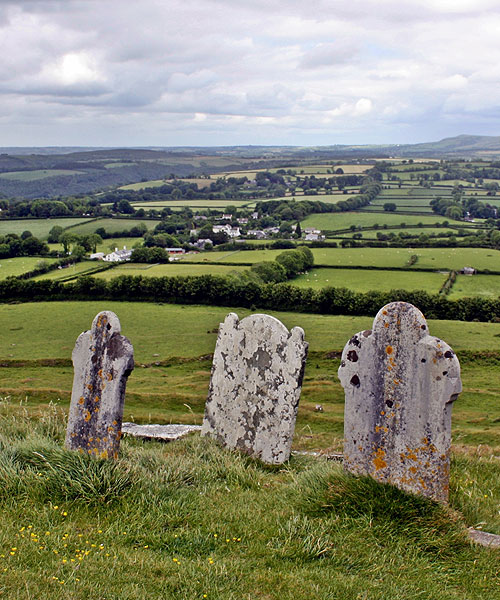
It is believed that the name of the Samhain holiday is derived from the word Samonios; it was the beginning of a New Year for the Celts, and it is a time that marked the second half of the year. The ancient Gaulish people did not celebrate four seasons, but two, each representing the light or dark half of the year; rightly so, Samhain fell during the time marked by darkness and became a holiday associated with the diminishment of light, darkness, and death. Since the season grew colder and plants began to die off during this time, Samhain marked the early entrance into the wintry season and easily became associated with death and the deceased. In ancient times, Samonios or Samhain was a three day celebration marked with customs that paid respect to deceased ancestors and involved giving thanks to the harvest one received from the spring and summer seasons.
The year of the Celts was divided into two parts: Beltaine and Samhain. Beltaine was celebrated on May 1 every year as Samhain was celebrated on November 1st. Samhain is not only a marking of the season of death, but of rebirth too since new beginnings are derived from endings. Some scholars trace the etymology of Samhain to the Gaelic word for Samhuinn that literally comes to mean “summer’s end.” Ancient peoples celebrated the holiday and identified it with different names; in Wales for instance, the holiday was considered the evening of the beginning of winter and was called Nos Calan Gaeaf. The holiday has also been referred to as Hollantide, All Hallows Eve, or Halloween.
Feast of Tara
The early Irish peoples celebrated with their tribes at a feast called the Feast of Tara. This festival involved the placement of the High King on his thrown and the marking of the new year to come. All fires were put out and the ancient Druids were responsible for lighting the first fire of the New Year. This first fire was lit on a hill positioned twelve miles northwest of Tara in Tlachtga. This place was considered sacred since it was a burial ground where the Ancient Druid Mogh Ruith’s daughter was buried, and who may have been seen as a form of the feminine Divine at that time.
Customs of the ancient holiday included the lighting of bonfires, the casting of personalized objects into the fire for the granting of prayers, and the ancient Scottish often danced around the bonfire in celebration. Ashes that remained from bonfires were used to protect future harvests too; they were liberally spread over the fields to ensure their future protection. Today, bonfires are still common in Ireland and the British Isles around this season, used to celebrate both Samhain and Guy Fawkes Day.
All Souls Day, All Hallows, All Hallowmas
When the Celts were conquered by the Roman Empire, the influence of Christianity began to permeate the Celtic rituals and beliefs. Christian missionaries and higher Roman Catholic officials declared the festival of Samhain to be evil, and sought ways to change the festival to become more Christian-oriented. In the 7th century, Pope Boniface IV proclaimed November 1st as “All Saints Day”, which was also known as “All Hallows” or “All Hallowmas”. From this came the name “Halloween”.
The ancient traditions were deeply ingrained into the Celts, however, and were hard to completely obliterate. As a compromise, the Roman Catholic Church eventually created “All Souls Day”, to be celebrated on November 2nd, and deemed it a day to pray for and honor the dead. No matter how hard the church tried, however, many of the native Celts still celebrated that time in the way that they always had. The evening prior to “All Saints Day” or “All Souls Day” was still observed by many Celts by leaving gifts of food outside their doors to appease the spirits. Many people today do not realize that this is the tradition they are following when they give gifts of candy to the “ghosts and goblins” that come knocking on their doors on Halloween night. Of course, from the festival of Sanhaim comes the tradition of the Halloween party, where guests come dressed in their favorite Halloween costumes.
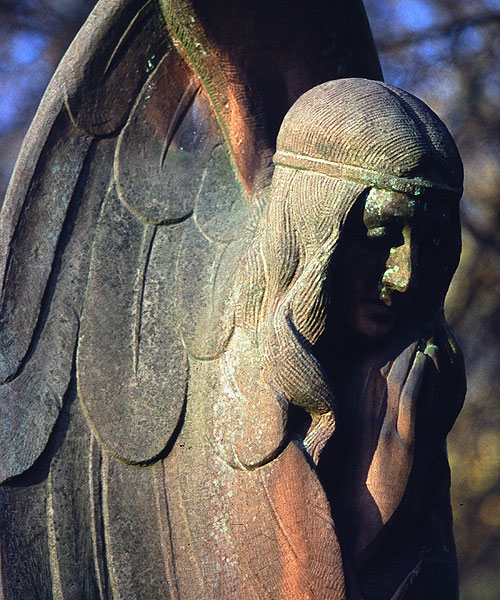
Christians adhering to All Souls’ Day practices commonly used soul cakes; these cakes were giving to those individuals that were poor so that the poor would, in turn, offer up prayers for the deceased. This tradition also stems back to ancient pagan practices were foods would be left out to the deceased to either satiate “hungry ghosts” or to appease and/or honor the deceased that would return on Samhain when the veil was thinnest to visit their living relatives. In addition, poor people would practice the tradition of “souling” where they would go door-to-door in wealthy neighborhoods in order to get soul cakes, alms, and fruit. This is where the modern day practice of going around neighborhoods to get candies actually began.
Nos Calan Gwaf or Allantide
The Cornish peoples also had a holiday that was similar to Samhain; it was identified as Nos Calan Gwaf or Allantide. The latter celebration was also associated with the Cornish Saint Arlan or St Allen. There may be some traditions from other Celtic festivals that have merged into Halloween traditions over time too. For instance, the celebration Hop-tu-Naa commonly marked the Celtic New Year for the Celts. At this time, people would go to their neighbors’ home and they would be given money and sweets. Today, this tradition may be seen in the more modern idea of trick or treating and requesting candy.
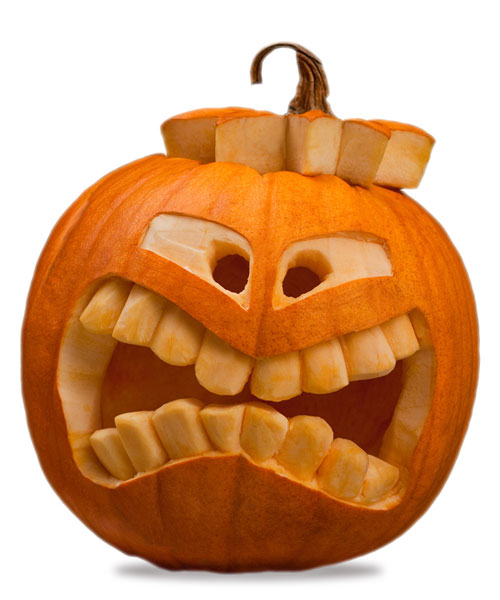
Stingy Jack
The tradition of carving pumpkins for Halloween decoration originated from the ancient Irish story of “Stingy Jack”, who tricked the devil into promising that he would not take Jack’s soul to hell when he died. Upon his death, Jack was unable to enter heaven due to the life of cruelty and selfishness that he had led, and was also unable to enter hell due to the devil’s promise. Cursed forever to walk in the darkness between heaven and hell, Jack took an ember from hell that the devil gave him and placed it inside a hollowed-out turnip to use as a lamp. Thus was born the “Jack-o-Lantern”. Eventually people discovered that it was easier to carve out pumpkins to serve as commemorative Jack-o-Lanterns on Halloween.
In Czechoslovakia, Halloween night is celebrated by placing chairs around the fireplace. There is one chair for each living family member, and one chair for the spirit of each deceased family member.
The Day of the Dead
In Mexico, Halloween is celebrated as “El Dia de los Muertos”, or “The Day of the Dead”. A festive and happy celebration, El Dia de los Muertos goes on for 3 days, and altars decorated with food, flowers, and photographs are constructed for deceased family members who are believed to return to earth on Halloween.
